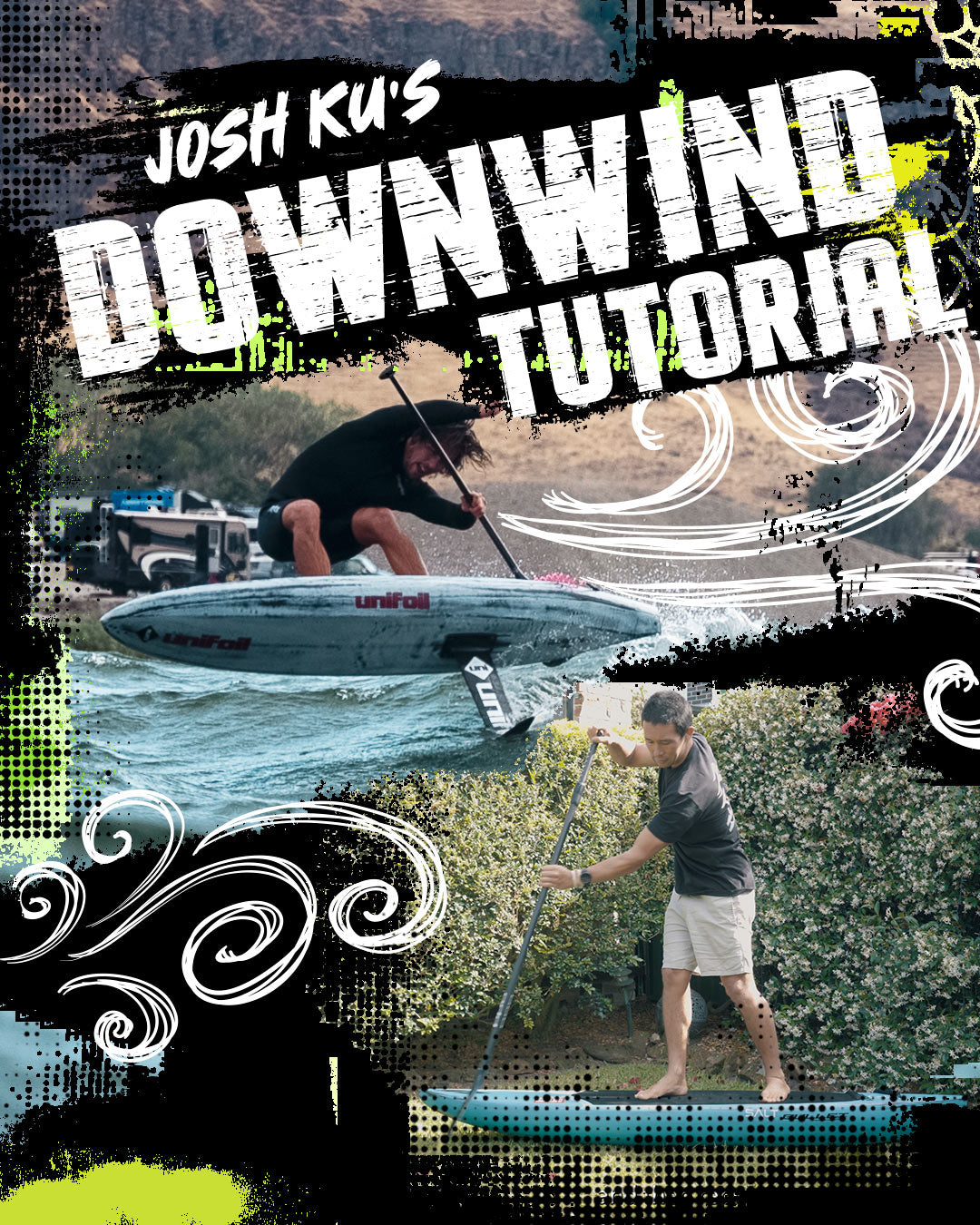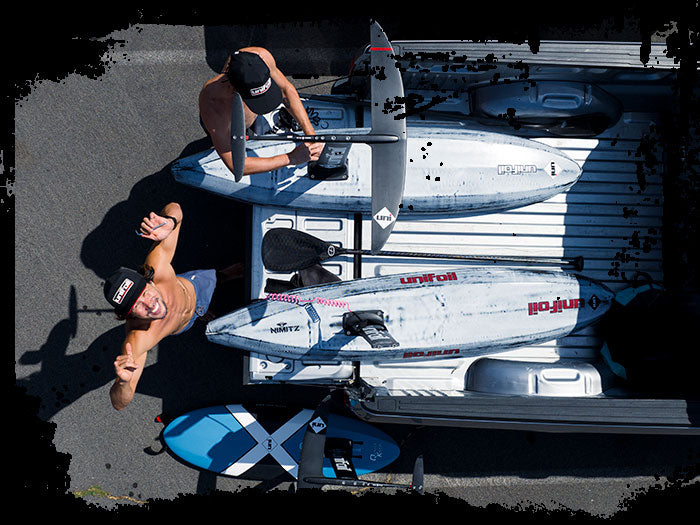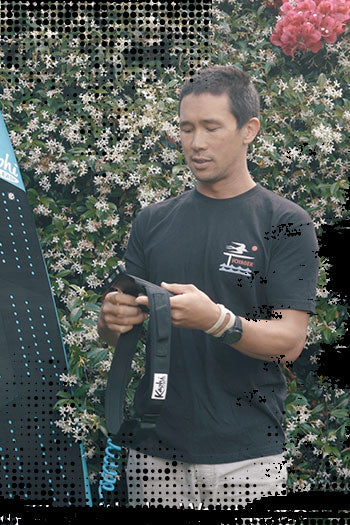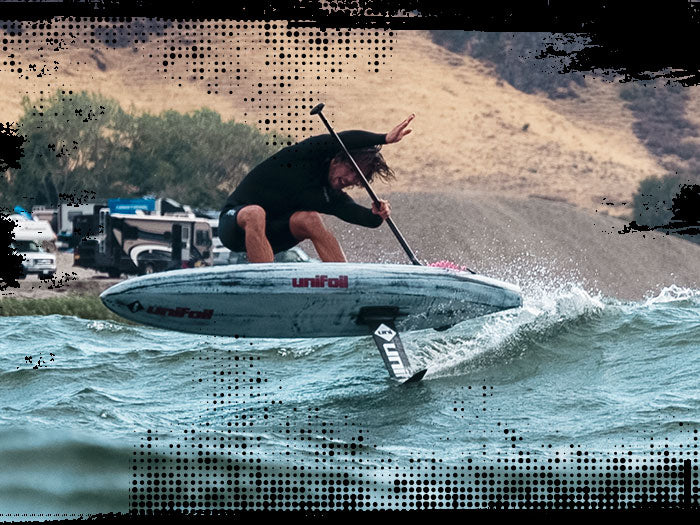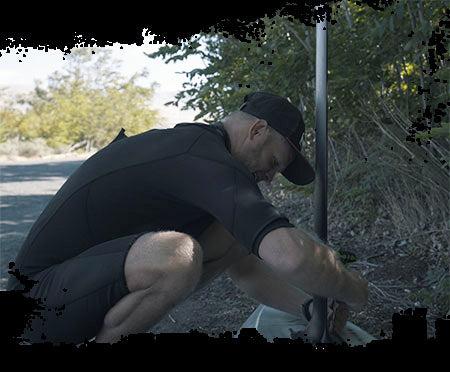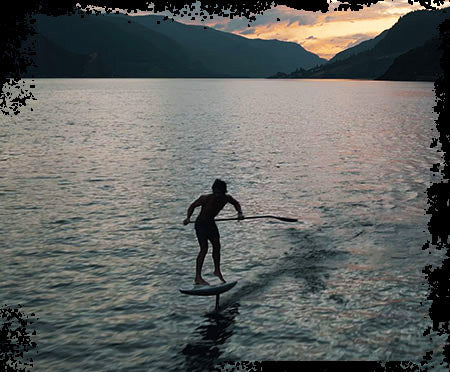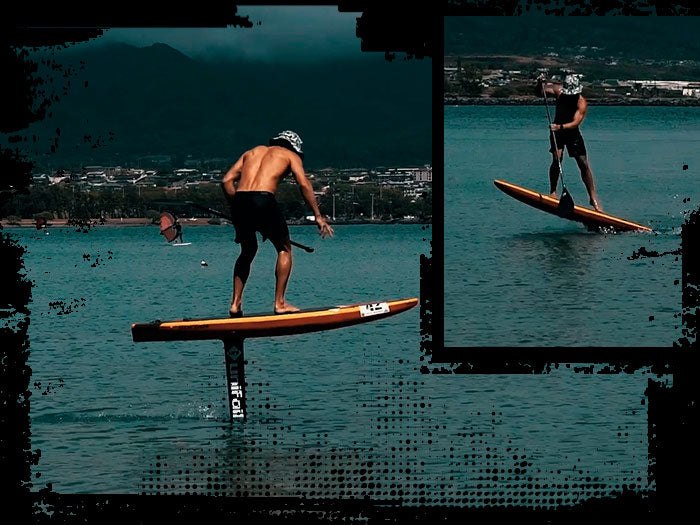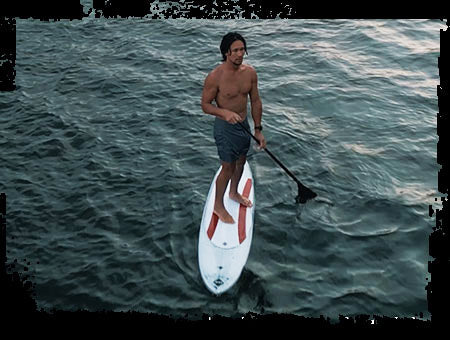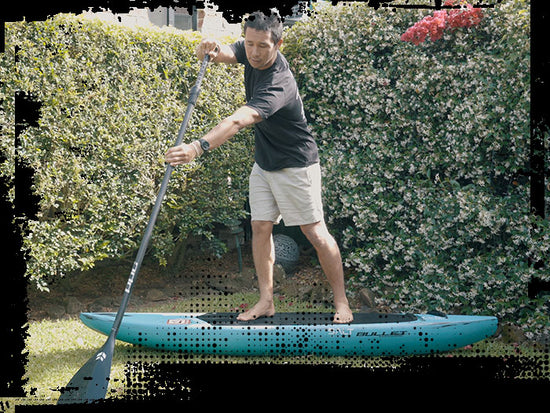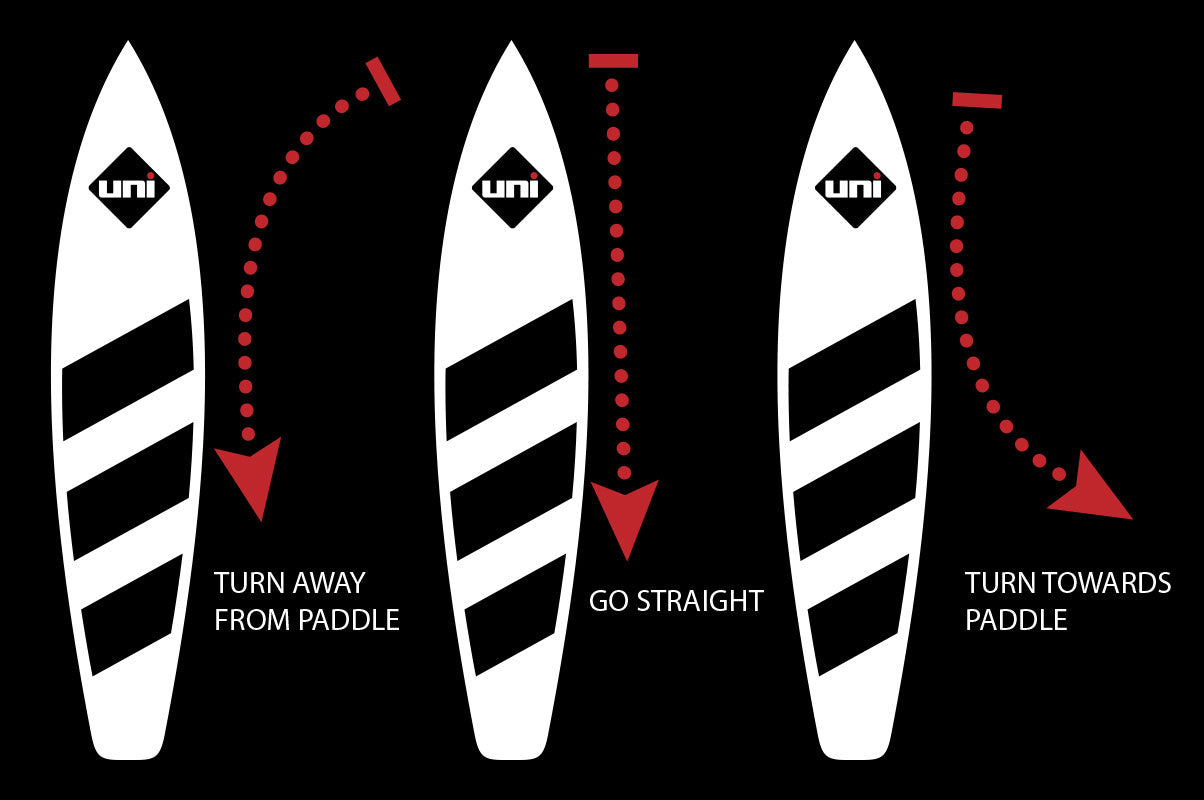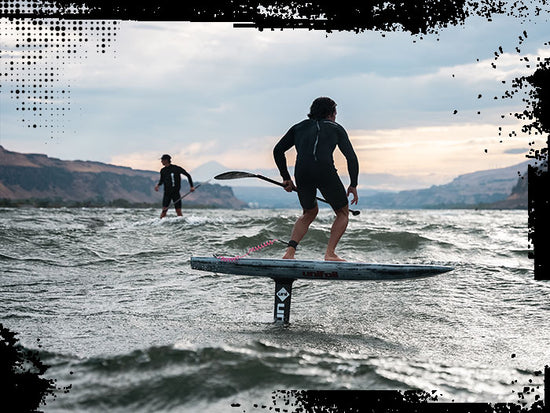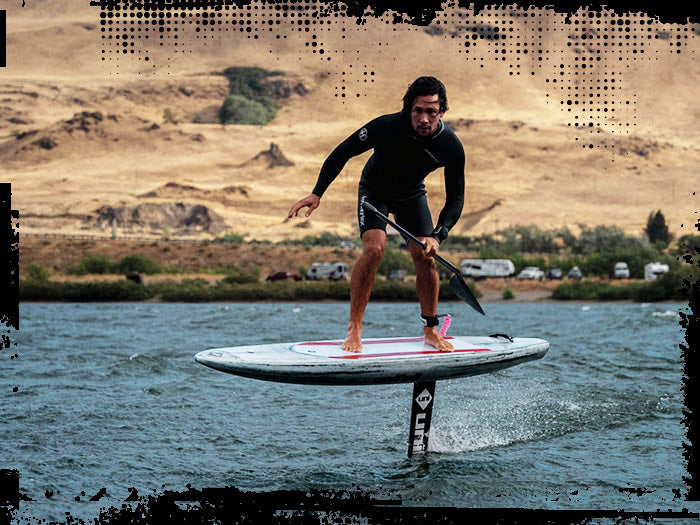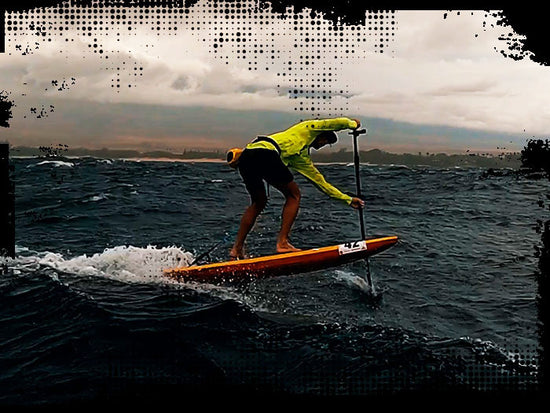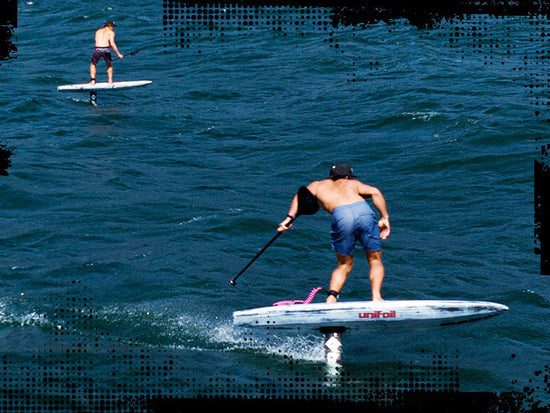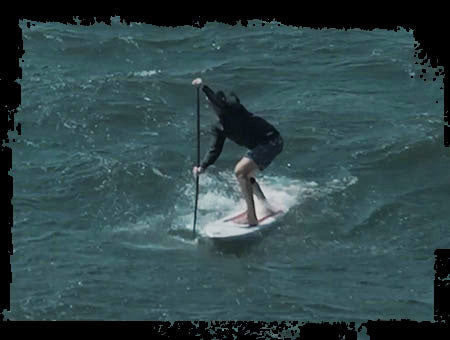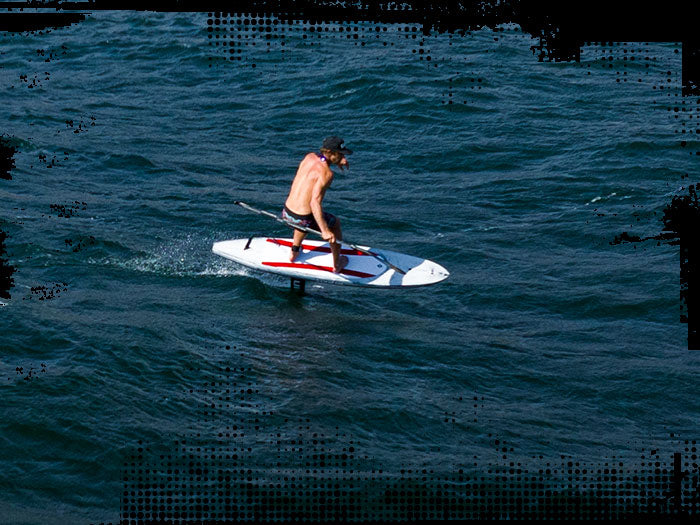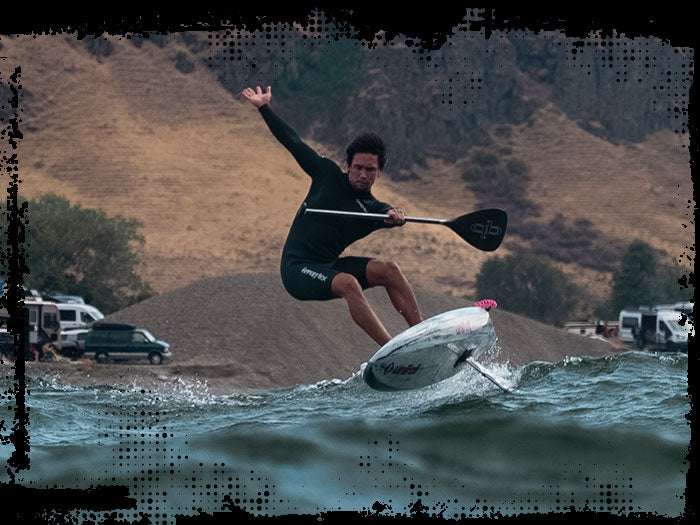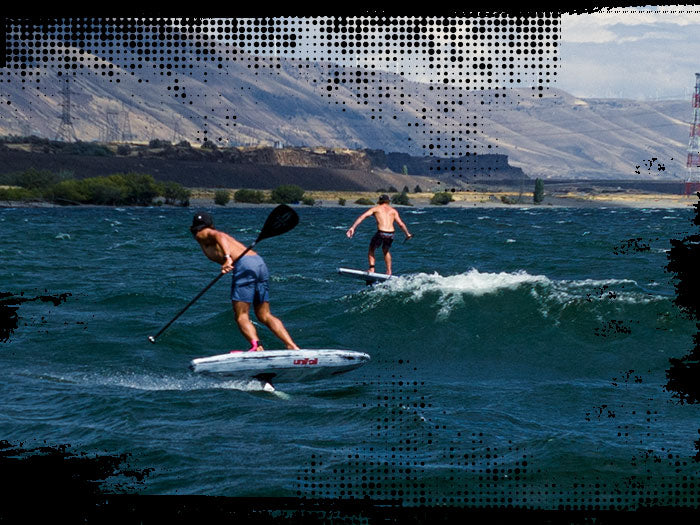-
Hi, my name is Joshua Ku, Team rider for Unifoil and absolute lover of Downwind SUP foiling. Today I'm going to run through tips for those of you coming from zero SUP background that want to get into SUP downwind.
So first of all, you need to get yourself a board. Depending on your weight, what I recommend is something with a lot of volume. Also something really long. Stability comes from length and it also comes from width, but when you're trying to paddle up from the flat or in bumps and you go wider and wider, it makes paddling up a lot harder. So what we want realistically, if you come from a background of zero supping, is something roughly in the seven to eight feet mark, depending on your weight. I weigh 77 kilos and I run a board that's 110 litres.
-
Say your 90 kilos. I would recommend something in the 120 litre, maybe even 130 litre range. Don't be afraid to go high in literage because, at the start, you want this for your balance and stability. What everyone has to learn with the SUP downwind is that you're always going to downsize and change boards. The board that you buy at the start is not going to be the board that you end up with in a year's time, especially with how the industry is moving with board designs changing a lot. What you want to do at the start is just get a board that's really big, really long, and stable.
-
Second of all, you need to get yourself a paddle. I've got this PVC paddle, and it's got an adjustable length. So what you can do, depending on your height, and the style of the way you paddle, you can change that to be higher or lower. The question that I get quite a bit is “What height should I start with?” I always recommend starting at the same height, or maybe just an inch above your head. This allows you to put the paddle out in front and pull through to where your back foot is and then release. That is where you get all your power from your paddle. Not from starting out the front and ending at the end of the board. All that does is push you down into the water, it doesn't push you forward. So yeah, highly recommend a paddle to start off with an adjustable length.
-
That way you can see what your personal preferences are. And then also if you buy a fixed paddle, you're stuck with that. And then if you want to change it, or you've cut it too short, you can't bring it back up again. What a lot of people these days are going with is something from the 85 to 110 square inch wide size. This is just letting us catch a lot of water when we're putting down only a few strokes. It can work against you when you're a paddle newbie because what it can do is ruin your technique when all you're doing is just putting a paddle in and putting a whole heap of water down and the paddle’s going everywhere. That's putting a lot of strain on your shoulders. So don't just buy the biggest one you can get. Do a bit of research, ask what's around in your local shops and go from there.
-
The third thing I definitely recommend, and for a safety feature is a leg rope or a waist leash setup. I preferably like the waist leash setup because it just keeps the leash off your legs and when you're pumping, it's not banging against your board and it's just really annoying. That's my personal preference.
And I also really like with the waist leashes that you've got a few extra connections here that you can hook stuff to I've got a phone case on my on my leash, just for a bit of safety and waterproof. So yeah, highly recommend and I definitely say that a waist leash is a safety thing and you should definitely be wearing that when you're out in the ocean.
-
So after you've got your board your paddle and your leash, the next thing that you need to decide on is foil choice. And this can be super complicated, but what I recommend just like the board, bigger is better. So I started off on the 210 Hyper2, that was the biggest foil I could get at the time. And I still recommend that foil if you can get your hands on it. But these days there's even even bigger one now the 250 Hyper2 and I've got that now and it is such a beast at paddling up in the flat water and working your technique I highly recommend starting at the top the 250 And then you work your way down in foil sizes.
-
What we also have now on the range is the Progression 200. This is also an epic wing to start on, say if you're a little bit lighter, just because that foil has a lot of surface area. Even though it is a big foil, when you get up, it's very maneuverable and it doesn't feel like a big foil. They're the three options I would highly recommend starting with.
I have people asking me all the time “Should I get a 140 progression 170 progression?” Honestly, if you start on those foils, your learning curve will be so much longer than if you just go out and invest in a big foil or borrow a big foil or demo big foil, and then work your way down in sizes. You will learn so much quicker and have way more fun because you will be on foil versus just paddling around the ocean not getting on foil.
-
When we have these big foils, we have to accommodate them with a very stiff mast, or else your foil is just going to be flexing and you're just going to be more unstable. So what I highly recommend is the new product, the Progression mast that is an 800 centimetre mast. That's a great mast, very stiff, and then also the Katana range. These masts are super stiff, and they accommodate these big foils perfectly.
While we're on tuning, I also recommend the biggest tail that you can get your hands on. Unifoil offer the 14.5 progression tail, this is quite a large tail that's also high aspect. This is a great one to start on. I always start my tuning with a zero degree shim and then, depending on lift and the pressure that you want on either leg, I would put in a one degree shim, or, you know, half degree shim or something like that.
-
Just being in the water with Josh raises your foiling level and knowing Dane is there with his sniper skills fired me up to push my newfound 7'5 skills. By this time I had a few hundred SUP miles of experience and could finally do a little showing off. Dane, battling current, captured some great action and the overall stoke of this sunset session.
-
The most important part of the tuning process is figuring out where the mast goes. This can be make or break between you getting the board on foil or just not even getting lifted off. So what I highly recommend is that if you can somehow get someone to film you while you're doing paddle up, and there you can see if your foot is well in front of the mast or well behind the mast when you're paddling up, this will define whether you're getting lift off or not. What I like to do as well is when I'm paddling on the board, I like to try and roll the board over on my feet and see where my feet are in relation to the mast.
-
I really like my back foot directly on top of the mast. That really allows me when I'm paddling up to let the board come up versus me putting all my weight and keeping it down. So yeah, highly recommend if you can get a friend or a partner who can be at the beach or the harbor and film you while you're doing this paddle up process because you will learn so much from just seeing yourself from another perspective and seeing what you're doing wrong.
-
When you first get your board in the water, what I highly recommend is just getting a feel for paddling. Do not even slightly try and get on foil. All you want to do is figure out your stance and your balance point on the board.
What you want to do is get your arms shoulder length apart on the paddle and you want to start by having your paddle out at the nose, the top hand close to your head. Then what you want to do is push down with the top hand and then pull to get to pretty much in between your legs and then out and then repeat. Do not paddle the whole way back. That is just wasting energy and causing your board to go down. So more sharp, short paddles at the top is working technique and overall gaining more power.
-
The biggest thing when you start paddling is that you'll realize whatever side you paddle on, whether you're goofy like me or natural, is that you are going to paddle in a circle. So what you need to learn is how to J stroke. So with the J stroke, you start, if you want to go left and you're goofy, you want to start out and pull in like a “j”. And that will make you paddle straight. This is something that you just have to learn and is all technique. If you try and paddle just in a straight line, you will just go right, and you won't be able to go the direction you want to go or paddle eventually into a bump, straight. So just work that technique.
-
The next thing that you're going to start doing is trying to put power down to engage the foil. What I always do is start off by doing three or four paddles, without even pumping your legs, just paddling. So 4 quick paddles, and then once you build up board speed and it's planing along the water, then what you want to do is time your legs with the paddle. When you paddle you push down, and then when you release, it's up. It's very important that this happens in that timing, because if it's off the power that you’re putting down in the stroke, it’s not going to correlate with what you want to do with the foil and it's just going to not work. It's very important that we work on this technique before putting any power down. It's all about just working technique.
-
I guarantee you're most probably not going to be able to paddle up on foil the very first session. So what you want to do is just work technique. Go down to the harbor every second day or every day and then just work this technique and over time, slowly, you will start generating speed, paddling in a straight line and eventually getting the foil up in the air and foiling.
-
Once you start getting the board bouncing along the water, the next tip or trick is that you want to finesse the foil. You don't want to be bouncing up and down like an ape trying to get that board up on foil because all you're going to do is stall the foil out if you're not going fast enough, which you're probably not going to be if you're beginning and your technique’s not that good. What you want to do is just little pumps. All this is going to do is create a little wiggling motion that's eventually going to get you up on foil versus big stomps that just stall the foil out. Just think when you're paddling and doing your technique that you're finessing, you're just slowly pumping, and then eventually working up your cadence to bigger pumps.
-
The most important part of the whole paddle up process is once you feel your board detached from the water, lunge out as far as you can because your board is going to be going up on the 45 degree getting lift off and you naturally want to lean back, which then you get no power.
So what you want to do is work on that lunge when you start getting lift off and putting all your weight on the front quad and leaning over and continuing that paddle because those three paddles when you first get lift off are the most important to continue your roll on foil. A lot of people they'll get lift off and then they'll lose balance and lean back and then stall out. So what you have to do, I just kind of call it like man handling it. So you just kind of paddle and then once you get lift off, continue that lunge forward and do three extra paddles. A lot of people when they get that lift off, they'll just stop and they'll try and pump and then they'll stall out. So just continue that paddle that's going to help you a lot to get on foil those continuing paddles at the end of your paddle up process will help you get you on foil and stay on foil.
-
Now you've worked your flat water and you can paddle in a straight line. You can paddle up a large foil in the flat water and then now you’ve got to bring it to the bay. I recommend the bay just because usually in the bay there's only one power source and that's from the wind. If you start in the ocean, which some people might have to because there's no bays around, you just have multiple power sources. You might have two swells coming from two different directions, and then the wind coming from another direction. So when you think about, if you're standing on your board, you're gonna get wobbled because there's three different directions of power coming out. I highly recommend starting in a bay because you'll see that when the wind’s blowing one way all the power is going that way. You can just literally point your board downwind and know that that's the way you have to go to paddle for a bump.
Bump reading is something that you just don't learn overnight. You have to just continually go out for three months, six months, a year, until you learn how to feel what a bump feels like to start paddling.
-
When you paddle, you don't want to look back, because what's happening behind you is not going to correlate to what's going to happen directly under your feet or in front of you. I recommend to paddle straight with the direction of the wind, looking 45 degrees to your left, 45 degrees to your right, and directly in front.
If you see a wind bump directly in front of you, a white cap, you know that behind you or right under you right now is another bump exactly like the one that you see in front of you, because everything in the ocean is patterns. And usually when a bump happens in front of you, there'll be three behind it. Usually, this is just patterns that I've realized over time. And it's a really good indicator. If you see a white cap happen in front of you, you know that directly under you, and then directly behind that bump, there's going to be two more whitecaps.
So if you see one in front of you, what you want to do is paddle towards that white cap, the back of that bump. By the time you paddle and generate enough speed, the one that's directly under you will lift you up, and you will get a downhill and start being able to paddle down the hill and your foil will engage and you will get liftoff.
-
Paddling in the bumps is a million times easier than doing flat water practice once you figure out what bump to choose. Start off in the bay. This is where I was lucky enough to live right next to a bay. It's just where you get your training wheels and where you figure things out because once you bring it to the ocean, there's just so much more going on. You have different period swells, you have different period wind chops, and it's just so much harder to read these patterns that are happening in the ocean.
-
Paddling in the bumps is a million times easier than doing flat water practice once you figure out what bump to choose. Start off in the bay. This is where I was lucky enough to live right next to a bay. It's just where you get your training wheels and where you figure things out because once you bring it to the ocean, there's just so much more going on. You have different period swells, you have different period wind chops, and it's just so much harder to read these patterns that are happening in the ocean.
-
Last but not least, do this all with a buddy. Try find someone who's gonna learn at the exact same time as you. It's so much better to learn with a friend because at the end of the day, when you down wind you need someone to do the car shuffling with, so if you guys are at the same level you're having the same struggles. You can go back and forth, see what each other are feeling or know what each other are feeling. And it's just going to be a more enjoyable experience, a safer experience and a good time. So enjoy and good luck with the downwind experience!
Pics by@salty_brother
-
- Choosing a selection results in a full page refresh.
- Opens in a new window.

